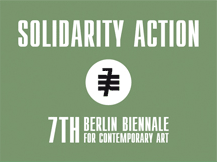1 I grew up reading and studying the masters, and I continue to do so. In college I learned from Emilio Garroni that thinking about art is the meta-thinking that then guides us towards ethics, politics and science. Recently Tomaso Montanari, considering the role of art history in Italy today (a country that has a widespread artistic heritage), has said that it helps us to develop a language of comprehension of reality, and therefore to be more aware citizens.
2 This is the result of the reorganization promoted by the “Codice Urbani” in 2004 on cultural assets, in which we find the notion of integrated services, put there on purpose, indicated as the economic solution to the crisis of cultural financing. What the public sector cannot do should be done by the private sector. I believe this idea of a complementary relationship behind the concept of integrated services was a Trojan horse with which companies like Civita or Zètema have, in practice, excluded democracy from the public management of cultural assets. Start by running the cafe, then take over the ticketing, the select the personnel and, finally, you can decide the policies of the museums of a city. They call them operating entities: they are entities that can become operations of monopolistic control. I am not saying that those who work at Zètema or Civita are corrupt or incompetent, I am saying that the cultural policy of an important city like Rome is managed by Francesco Marcolini – the CEO of Zètema – just to cite one example. Moreover, with the idea of protecting jobs and rationalizing their cost, this strategy has often been reversed into its opposite: this operating entities have become a sort of ATAC [public transport authority of Rome] on the left: Zètema, with approximately 850 employees, and Civita with its 600, function as reservoirs of votes.
3 Why do we always have to seek alternatives? Let’s ask the public sector to spend more! Let’s turn the priorities around. More money for university research, less resources for a history of art reduced to tourism marketing. Furthermore: instead of “enhancing the value” (as they say) of cultural assets, taking the Riace Bronzes on a tour of the right-wing administrations to fill the cash boxes, let’s use and finance the informal expertise that exists in the territory. Rather than financing portals like Italia.it, we should be monitoring and coordinating those micro-agencies of information from the ground up (from blogs to experiments, like Exibart or Eddyburg used to be). Let’s start with what already exists and has been able to survive in the recent ugly years.
4 The example of the statute of the foundation of Teatro Valle is a gem in legal terms, on which experts of the caliber of Ugo Mattei and Stefano Rodotà have worked, along with hundreds of citizens asked to collaborate on its preparation. Today there are many tools for collaboration on the management of cultural assets, and we even use some of them without realizing it.
5 It is necessary to start over, from the formation and training of the public, to avoid a situation of useless resistance; to begin again, from the education of the citizenry; or more precisely from the schools and the universities. It is not comprehensible that, today, the Ministry of Education and that of Cultural Assets are separated.
6 I do not have sufficient expertise to answer this question. I think the art market in recent years has been used for purposes of speculation by the foundations and the banks, for example. Paintings utilized like bonds and futures.
7 Artists have to do things, like everyone, like all citizens. That’s enough. A civil art, literature or music is not needed. The civilization of art lies in its being intrinsically in conflict with its time. Give it a civil purpose and you will make it into a public service advertisement that will not help anyone progress.
8 Good question. Why is that only today, after having been accustomed to delegating for years, we are re-educating ourselves in terms of politics? Pardon me, but do you think it is normal that the cultural director of Rai 1 is Gigi Marzullo, or that the Superintendent of Cultural Resources of Rome is Umberto Broccoli?
9 In this moment in Rome there is a horrible public administration, whose idea of a “metropolis of culture and art” takes concrete form in the Futurist race, or the Grand Prix of Formula 1 inside the city. What would happen if the mayor of Paris or Venice proposed such a thing?
10 My hopes lie in the grassroots vitality of the city of Rome, nurtured in recent years by an informal force and by the capacity of people to develop ideas and relationships. It would be a shame if all this energy were not granted the space and the possibility to continue to expand.
CHRISTIAN RAIMO
Writer. Member of the generazionetq movement, composed by intellectual workers in their thirties and forties.


